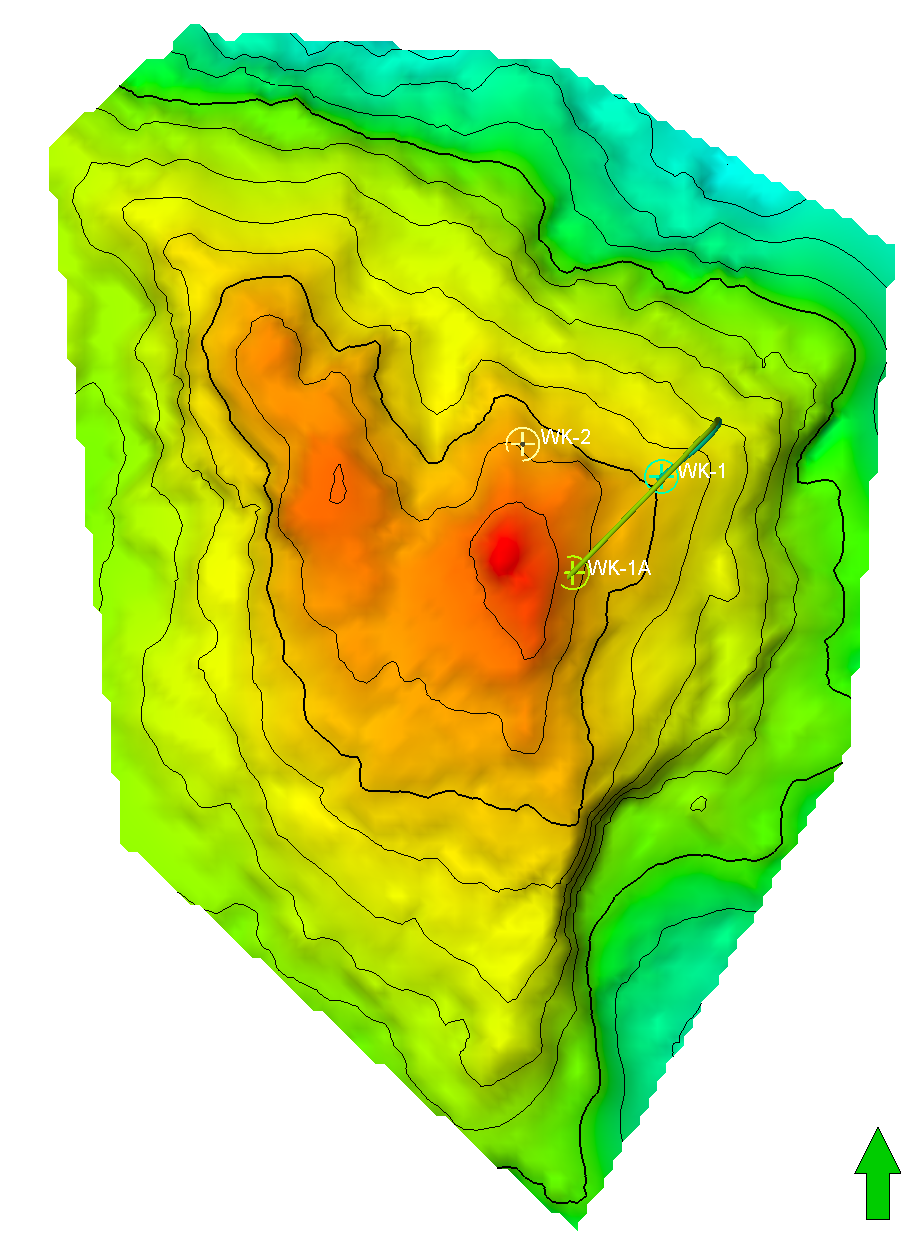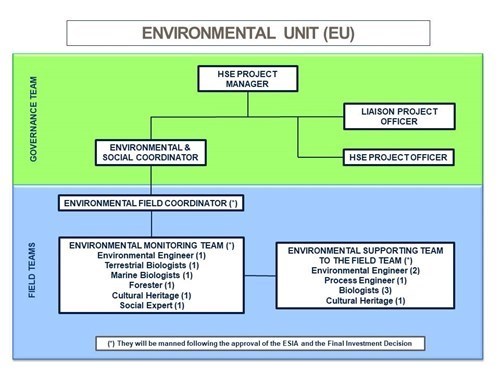Katakolo
- Home
- Operations
- Greece
- Katakolo

Energean is the Operator in the Katakolo licence, in Western Greece, holding a 100 per cent working interest.
The West Katakolo Exploitation area is part of the Katakolo block and covers 60 km2. NSAI has audited 14 mmboe 2C resources in the block.
In August 2017, the Greek Government approved the Field Development Plan (FDP) submitted by Energean. Energean has planned to make FID or decide a farm down upon the approval of the necessary environmental studies.
Energean will use Extended Reach Drilling (ERD) technology to drill from onshore to offshore reservoirs. This process is similar to the method used by Energean to successfully drill several wells in Prinos (Greece) and the Gulf of Suez in Egypt.
The programme also includes building roads and installing other necessary facilities (storage deposits, buoy etc.).
The field
The Katakolo license covers onshore, shallow water and deep water acreage on the west coast of the Peloponnese. The block, covering an area of 545 km2 both offshore and onshore, contains 3 discoveries and multiple leads. The water depth is 200–300 metres, while the depth of the reservoir is 2,300-2,600 metres.
The field contains approximately 180 metres of sour gas column overlain of an oil rim of 120 metres in a large carbonate structure with further undrilled deep potential
History
The wider onshore area was first drilled in 1939. Thirteen onshore wells followed by 1984, 10 of which found oil and gas.
The Greek state oil company made the Katakolo discovery just off the coast of Peloponnese in the Ionian Sea in 1981 by drilling the West Katakolo-1 well, which was followed by West Katakolo-1A and South Katakolo-1 wells(both found oil).
Energean has been exploring the block since October 2014, after the ratification by the Greek parliament of the License Agreement, signed with the Greek state on May 14th 2014. The company declared commerciality for the field after having finalized the reprocessing and interpretation of the existing 3D seismic data.
In November 2016, Energean and the Greek Ministry of Energy agreed the conversion of the exploration license for the proven West Katakolo offshore field to a 25-year exploitation license.
Environmental unit (EU)

GENERAL INFORMATION
In August 2013 issued the Joint Ministerial Decision 169895/8.8.2013 endorsing the Approval Decision of the Strategic Environmental Impact Assessment (ADoSEIA) for the oil & gas exploration and production activities in the area of West Katakolo in the Western Greece Region, in Ilia Regional Unit, in Municipality of Pyrgos and defining basic environmental monitoring requirements.
In October 2014, Katakolo Lease Agreement was ratified by virtue of Law 4298/2014 (Government Gazette A’ 220/3.10.2014) between «Energean Oil and Gas” and “Trajan Oil & Gas Ltd” for the concession of the permit of exploration and exploitation of hydrocarbons in the onshore and offshore areas.
Based on the above, the 1st and 2nd stage Environmental Baseline Reports (EBR) were issued. The scope of the 1st stage EBR was collection of data and recording and assessing the state of the environment in the wider area of Katakolo, in order to be clearly defined before the commencement of the activities (to avoid Operator’s involvement in the existing situation), and to provide a reference for the monitoring program. The scope of the 2nd stage EBR was the assessing of the environment in the direct area of influence of the proposed exploration program which will take place in the onshore area aiming to the offshore reservoir in a distance of about 3,5 km S-W of Katakolo cape, by selecting data from public services, institutions and existing research programs but also executing field measurements.
The environmental and social monitoring is taking place by a dedicated Environmental Unit that is staffed by Environmental Engineers, Terrestrial Biologists, Marine Biologists, Foresters, Archaeologists and Social Experts. Also a six membered Technical Advisory Committee, which is formed by three persons from the public service and three from the operator, is monitoring the compliance of the project. The president of this committee is a representative of the public service.
PROJECT ACTIVITIES
No field work has been done since the commencement of the Convention to date in the conventional area, which could have the slightest impact on the physical, social and economic environment. The environmental status as received on 3/10/2014 with the commencement of the Convention and was extensively described in the 1st and 2nd stage EBR remains the same with no change.
On 2016 began the preparation of the West Katakolo Field Development Plan (FDP) and the Environmental Scoping Report (ESR) as a preliminary Environmental & Social Impact Assessment (ESIA). On February 2017 both FDP and ESR were submitted to the Ministry of Environment and Energy (MoEE) and the Hellenic Hydrocarbon Resource Management (HHRM) and approved.
On 2017 the Preliminary Determination of Environmental Requirements (PDER) was prepared and submitted to the MoEE, initiating consultation with the State stakeholders that is in progress.
During 2018 the A’ phase ESIA will be submitted including the onshore drilling activities and aiming to proceed with the necessary preparatory field activities by Q4 of 2018. B’ and C’ phase ESIA will also be submitted during 2018 including process & loading installations and also potential further drilling activities.
BRIEF DESCRIPTION OF THE ROLES AND FUNCTIONS OF THE ENVIRONMENTAL UNIT
The Environmental Unit set up by Energean for environmental and social monitoring of the activities in W. Katakolo consists of three main Teams which will cover and apply the requirements stated in the ADoSEIA.
- A Governance Team,
- An Environmental Monitoring Field Team,
- A Support Team.
In addition to the above Teams there will also be an independent Health and Safety Team to oversee the safe execution of the work and to ensure the protection of the employees and the residents.
The Environmental Monitoring Field Team will perform the Environmental Monitoring through a number of multidisciplinary operative groups covering Forestry, Biology, Archaeology and Engineering. These personnel will monitor the areas of operations before, during and after operations are undertaken. Impacts will be assessed, mitigation measures will be verified, and restoration measures will be checked by this team.
The Environmental Support Team to Field Operations will be coordinating the Environmental Monitoring Field Team, and will be reviewing and reporting the information obtained from the field.
The Governance Team consists of the HSE Project Manager, knowledgeable in operations, the Liaison Project Officer contacting with local communities and public administration, the HSE Project Officer and the Environmental & Social Coordinator of the field teams. The main functions of this Unit will be twofold:
- Firstly, a governance role, verifying that operations are managed per applicable Country, Energean’s regulations and international standards. To assure independence to fulfill this Governance role, they will be communicating on a regular basis with each Project and Field teams.
- Secondly, they will be managing the release of public Environmental Information, and gathering public comments and concerns through a dedicated Web page (energean.com/operations/Greece/katakolo/) which will be open to public.
COMMUNICATION
Should you have any questions, comments or complaints about the information provided on this site please fill in the form below.